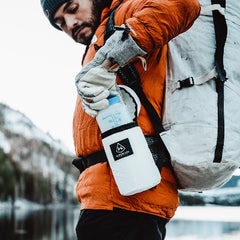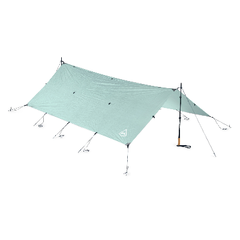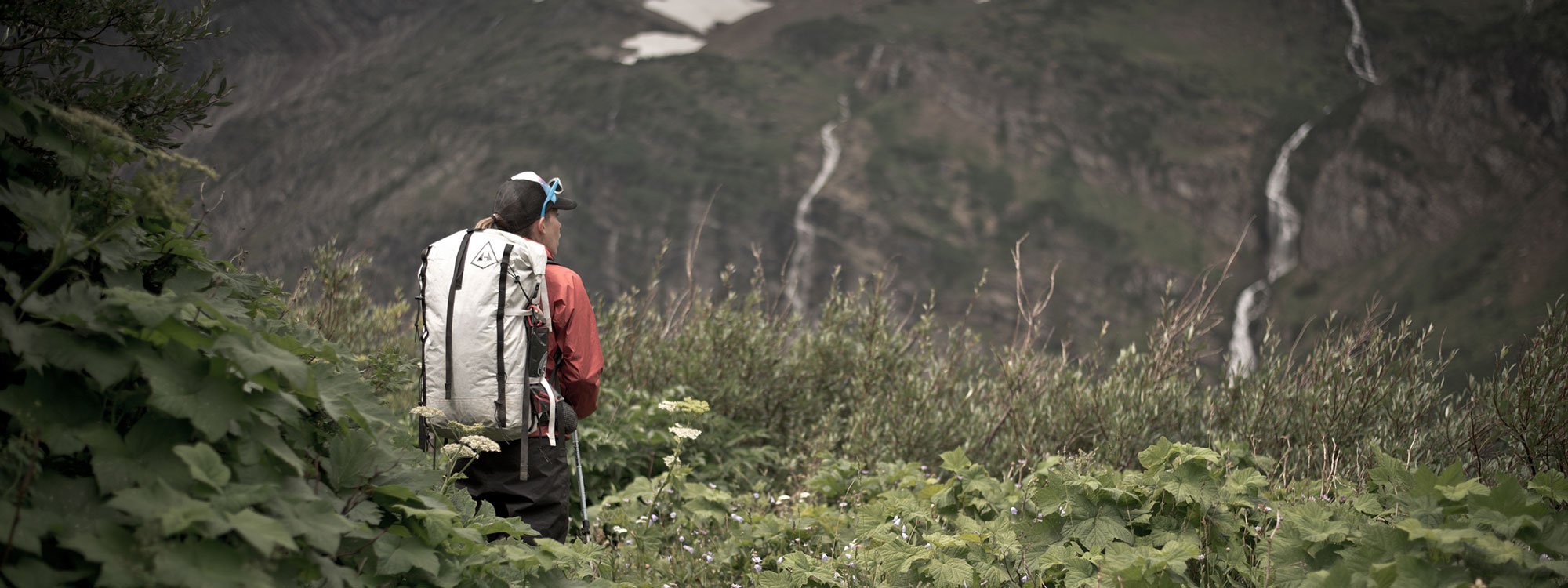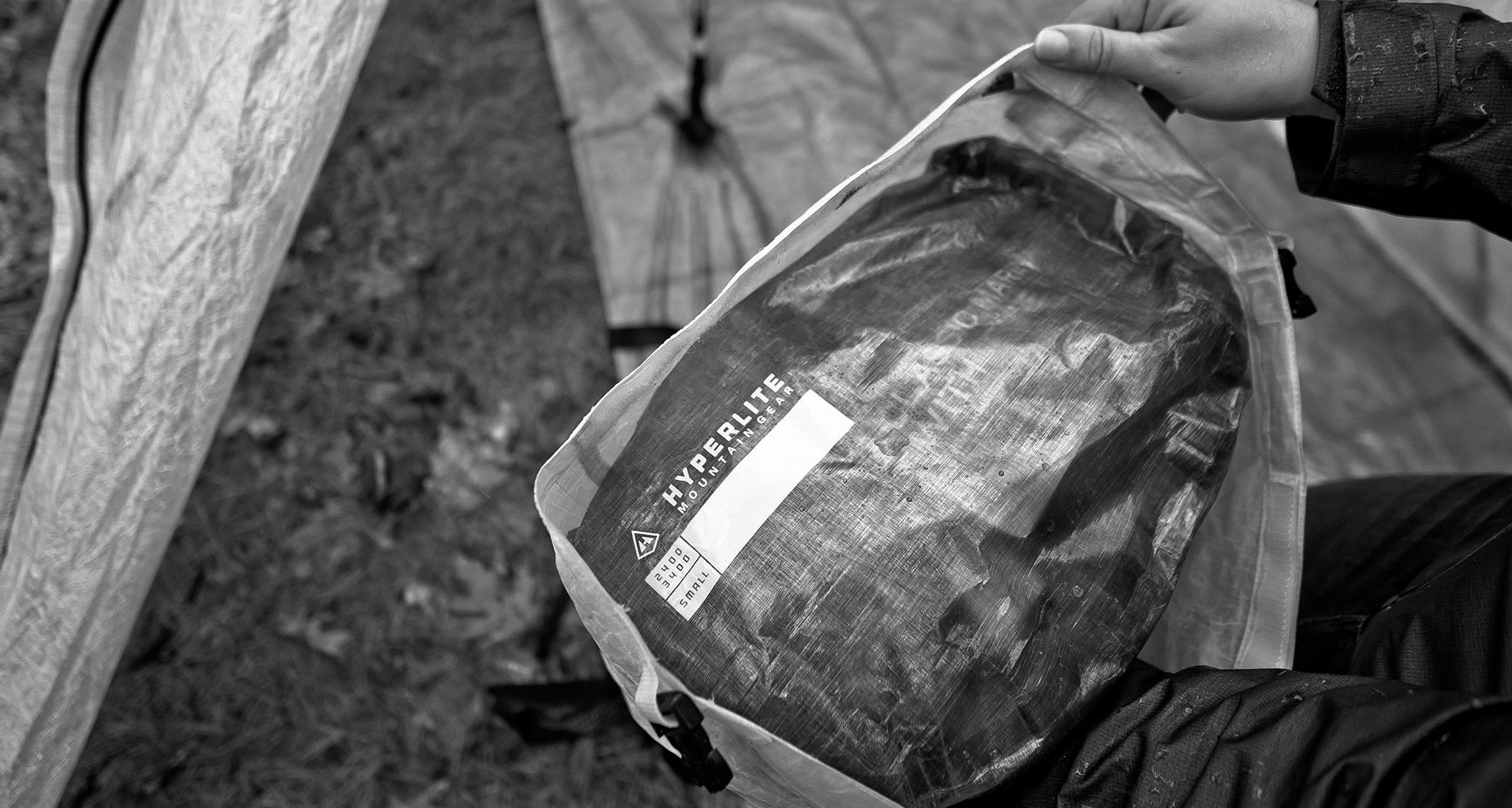Words by Mike St. Pierre // Hyperlite Mountain Gear CEO
Going lightweight is not just a goal for thru hikes and backpacking trips; it’s how I live my life. I believe that refining your lightweight backpacking gear list is worthwhile because it translates to going further, faster, and suffering less in general while you’re out. In short, less gear (and lighter gear) equals more adventure.
Over the past decade or so, I’ve obsessed over the details and re-invented my approach time and time again. Along the way, I learned the standard ultralight methodologies–specifically how to lighten my load by addressing the “Big Three”: my pack, shelter, and sleeping systems.
In the process, I’ve also stumbled upon one very important truth: it’s not just about agonizing over grams and ounces; it’s about choosing simplicity at every stage of the process. That’s why I’ve settled on building my gear lists for trips based on a single, basic three-season list. Using this lightweight backpacking gear list as a starting point, I can subtract items if I want to go ultralight in a given instance or add items for multi-sport trips.
The Essential 3-Season Check List:
1. BACKPACK SYSTEM: Pack, Pods, and Stuff Sacks
2. SLEEP SYSTEM: Sleeping Bag, Sleeping Pad, and Pillow
3. SHELTER SYSTEM: Tent or Tarp + Insert
4. THE REST: Stove, Cookware, Utensils, Water Filtration, Rain Gear, Clothing, Food, Trekking Poles, Electronics, First Aid Kit, Hygiene
 BACKPACK SYSTEM
BACKPACK SYSTEM
The redundancy of the pack "system" is incredibly important. Yes, our packs are built using waterproof Dyneema® Composite Fabrics (formerly Cuben Fiber). However, they are not 100% waterproof. No pack is 100% waterproof. But pack covers are just a pain (they snag, fly off, rip easily). So, for our pack system, we use a highly water-resistant pack, and then for redundancy, we also use stuff sacks (preferably made with waterproof Cuben Fiber). Redundancy is the best way to keep your ultralight gear totally dry.
If you were to go with all the gear I’m recommending, you should be able to fit your entire kit into a 2400 cu in. (40L) pack, or certainly one of our 3400 cu in. (55L) packs.
To complete the system, I’ll bring a set of Pods (one small and one large) and Drawstring Stuff Sacks (two Jumbo, one for a sleeping bag and one for food; a Large to be used as a clothes bag; an additional large and one small for other odds and ends).
Read more about how I use stuff sacks in my blog post, Ultralight Stuff Sacks for Thru Hikes & Backpack Trips.
 SLEEP SYSTEM
SLEEP SYSTEM
Sleeping Pad: Therm-a-Rest NeoAir XLite 12 oz. to 16 oz., depending on a regular size or long.
Sleeping Bag: I carry a 1 lb. 45-degree bag for most summer trips and use a 20 -degree for the colder seasons.
Pillow: Stuff Sack Pillow: During the day it doubles as a stuff sack for my ultralight puffy. At night I flip it inside out and the soft fleece liner gives me a great spot to rest my head. These pillows come in two sizes.

SHELTER SYSTEM
I always recommend the UltaMid Pyramid Tent System, which comes in both two-person and 4-person sizes and three different insert options (Half Insert, Full Insert with Floor, and Full Insert, No Floor).
Or, if you want to go super ultralight and test your ability to adapt to the changing conditions, bring a simple Flat Tarp.

THE REST
The “heavies” will be most of your load, but some careful planning is also important for the rest of your ultralight gear. Here are the key components I typically have in my kit.
MSR PocketRocket® Deluxe or the Jet Boil Flash Lite Cooking System: When I carry a stove, I bring one of these ultra-lightweight stoves. The MSR weighs just 2.9 oz. and is capable of boiling one liter of water in three minutes. The amount of uses that a simple stove has on the trail makes it an invaluable item in any hiker's pack. On the other hand, the Flash Lite is the most efficient, and you don't need to bring an additional pot along. Finally, alcohol stoves are the lightest option, but they are not the most efficient. The cool thing is you can store your fuel in a plastic water bottle and can find fuel in any gas station or convenience store in the United States.
Vargo's T-Lite Mug 900: A kettle or pot is very important to bring on a hiking trip if you want to cook or heat water for tea/coffee. Plus, it's an all-in-one bowl, water boiler, and cooking pot. It's usually the only cookware item I bring with me.
Vargo Titanium Long-Handle Spoon: Long ones work better if you are going to eat dehydrated meals directly out of the package.
Sawyer Squeeze and Micro Squeeze Water Filtration Systems: Both filters remove 99.99999% of the kinds of bacteria you'd likely encounter on trail and can be used in a variety of ways to best suit the way you travel. Each kit comes with bits and pieces you might need to keep them operating in tip-top condition for thousands of gallons of safe and delicious joy over countless adventures to come.
Rain Gear (jacket at least): I look for one that is about 6-8 oz. in weight. I prefer using waterproof, breathable shells.
Clothes: I will usually only bring two shirts (one to wear and one to sleep in). One pair of shorts, three pairs of socks, and a thin insulating jacket. If you get cold, you can always wear your rain gear.
Shoes: I prefer to hike in trail runners. They are much lighter and dry much faster than any kind of boot. I don't bother taking off my shoes when I come to a stream crossing. I don't recommend getting GORE-TEX® for footwear as they tend to take a long time to dry once water has gotten inside them.
Trekking Poles: Telescoping trekking poles are also a good idea. I always carry two as they are the supports for my tent, but I usually only hike with one and stash the other on my pack.
Remember, you should never sacrifice safety for lighter pack weight. And keep in mind that the above is my basic setup. You'll definitely need to add a little weight (4-5 oz.) for small personal and safety items such as a lightweight compass, utility knife, toothbrush, etc. Also, suppose you're going into specialized conditions (winter, alpine, etc.) or will be out for an extended expedition. In that case, you will definitely want to carefully consider what additional equipment you might need and build that into planning your gear list.


















